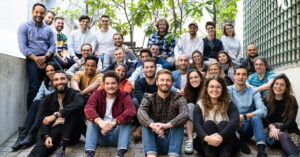This weekly quiz from YS tests your domain knowledge, business acumen, and lateral thinking skills (see last week’s quiz here). In this second edition of the quiz, we present five issues tackled by real-life entrepreneurs in their startup journeys.
What would you do if you were in their shoes? At the end of the quiz, you will find out what the entrepreneurs themselves actually did. Would you do things differently?
Q1: Online education
Online material and video conferencing helped many schools manage the lockdown period. However, there were serious concerns with the quality of teaching, overload on teachers, and inability to hold students’ attention. In addition to better training for teachers, what other online solutions do you think would help engage students and make things easier for teachers as well?
Q2: Effective recruitment
Traditional recruitment has been based on paper or online resumes, followed by in-person or video interviews between HR teams and candidates. Automation can be one solution to make video interviewing faster and easier. What’s another way to improve the video interviewing process?
Q3: Renewable energy
Solar and wind energy offer a number of advantages, such as less pollution and environmental damage. They reduce global warming and dependence on imported fossil fuels as well, an important consideration for emerging economies. But there’s also an important workforce angle. What’s that?
Q4: Founder’s assets
A good team, tech skills and an effective brand are key success factors for a 21st-century startup. Software (and data) are eating the world, and all companies will be tech companies. Problem spotting and value generation for customers and investors are important as well. But there’s another key success factor, which is often referred to as “the invisible co-founder.” What’s that critical enabler?
Q5: Beyond influencers
Much has been said about the importance of influencers for marketing, branding and sales, particularly in the world of social media. But dealing with star influencers comes with its challenges as well. In response, a more nuanced and refined approach has emerged. Who comes after influencers?
Answers!
If you’ve gotten this far, congratulations! But there’s more to come – answers to these five questions (below), as well as links to articles with more details on the entrepreneurs’ solutions. Happy reading, happy learning – and happy creating!
A1: Online education
A solution based on LMS (learning management system) offers automation for repetitive tasks such as attendance tracking and reporting. Students can learn at their own pace and in their own style. Many LMS platforms also offer gamification features that teachers can leverage to make learning more fun and engaging. Features include points, badges, and peer activities (read more here). Another advantage of gamification via LMS is that it offers localisation by language and country.
A2: Effective recruitment
Some of the early-stage interviews merely assess the basic soft skills of candidates, such as speaking and posture. These don’t require the advanced expertise of a company’s interviewers. So how about crowdsourcing these basic video interviews to the broader community of freelancers and outsourcing firms? This can be applied to tech domains as well. That’s what startups like RiseBird offer – a video interviewing platform and a marketplace of technology experts as live interviewers. Read more here.
A3: Renewable energy
Renewable energy also plays favourably into the hands (or workforces) of countries with such installations. “Renewable energy provides many more jobs for megawatt installed,” according to Marcelo Mena-Carrasco, a former Chilean environment minister, and now director of the Climate Action Center at Pontificia Universidad Catolica de Valparaiso. People working on extracting fossil fuels work largely in oil-rich countries, whereas solar panel and wind turbine installations create more local employment.
A4: Founder’s assets
The invisible co-founder is the culture of the organisation! “Culture is a fundamental management tool and one of the very few sources of sustainable competitive advantage left to companies today,” explains Manoj Agarwal, Co-founder, Xoxoday. Culture is much more than pizza and foosball – it involves the founder defining and aligning values with the organisation’s mission, storytelling, and hiring people with the right fit – and much much more.
A5: Beyond influencers
Micro-influencers and nano-influencers are being roped in to tackle the challenges of deploying large-scale influencers. Micro-influencers, with a follower base between 10,000 to 100,000, are regarded as more organic and creative, with higher engagement than their megastar counterparts, according to Vipul Talwar, Co-Founder at Voxxy. Nano influencers, with between 1,000 and 10,000 followers, can also be targeted by startups like Opportune.
YS has also published the pocketbook ‘Proverbs and Quotes for Entrepreneurs: A World of Inspiration for Startups’ as a creative and motivational guide for innovators (downloadable as apps here: Apple, Android).










